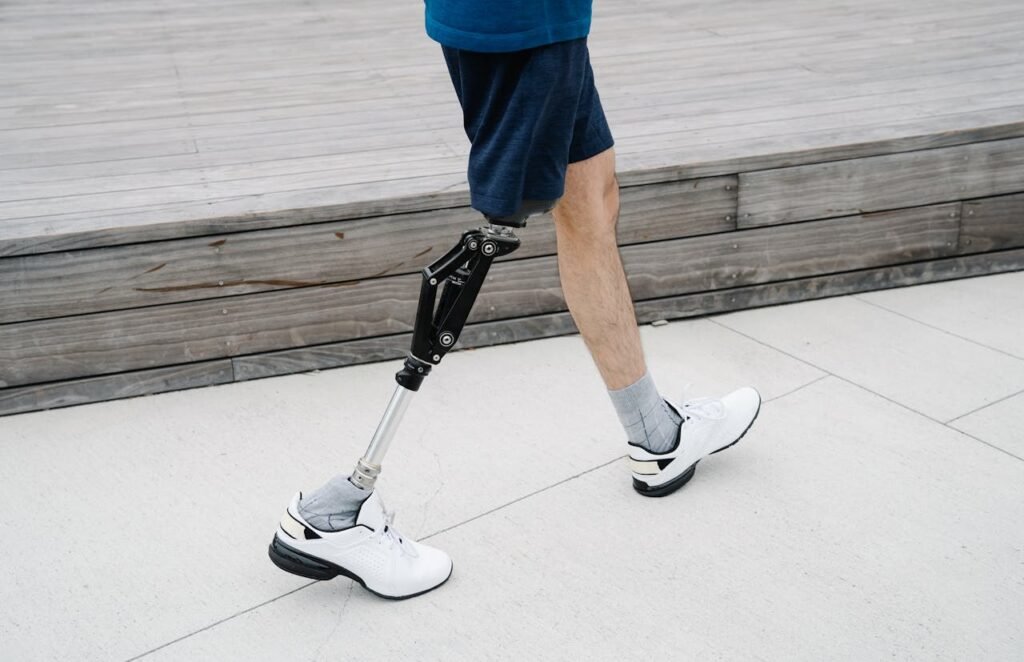Staying active doesn’t always mean heavy workouts or long walks. For many seniors using prosthetics, the best exercise routine is one that’s gentle, short, and easy to do every day. Even ten minutes can make a big difference in how your body feels and how smoothly your prosthesis works.
As we age, our muscles naturally weaken, and balance changes. Regular movement helps maintain strength, flexibility, and confidence. But when you add a prosthetic limb into daily life, movement can feel uncertain at first. That’s where low-effort exercises come in—they keep you strong without strain.
At RoboBionics, we’ve worked with many seniors who thought exercise wasn’t for them anymore. Once they started simple, consistent routines, their energy, posture, and comfort improved dramatically. The key isn’t intensity—it’s regularity.
This guide is designed for older adults using prosthetic limbs who want to move better, feel lighter, and stay independent. You’ll learn gentle exercises that take just ten minutes a day, along with tips for safety, comfort, and motivation.
Warming Up the Body Gently
Why Warm-Ups Matter for Seniors
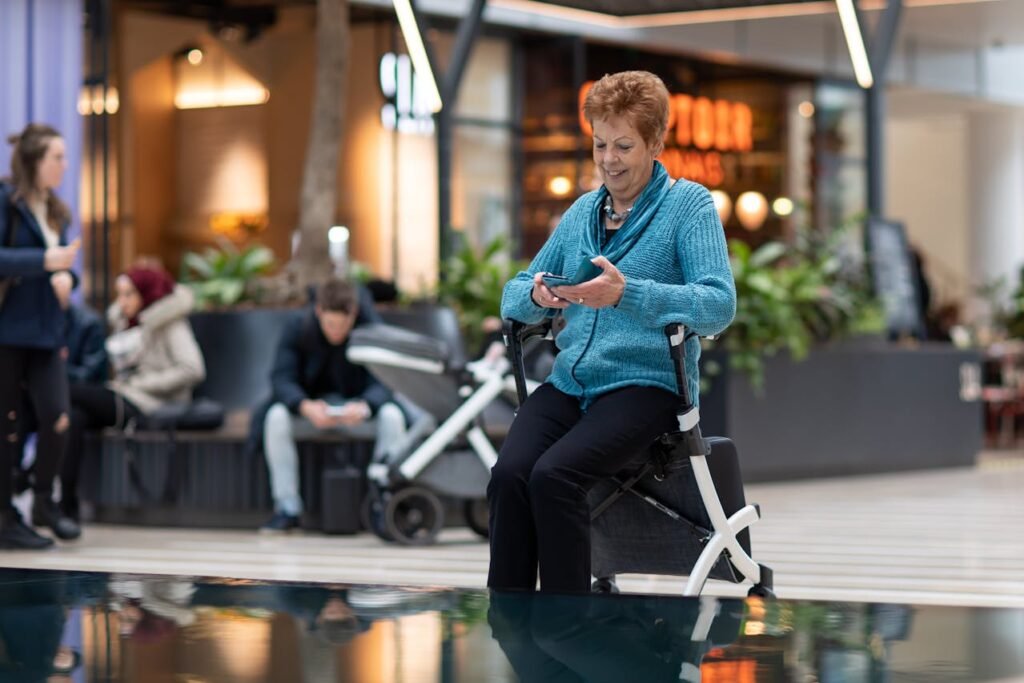
A few minutes of warm-up prepares your muscles and joints for movement. For seniors using prosthetics, this step is even more important because it helps your body adjust to balance and rhythm before any exercise.
When you warm up, you increase blood flow, loosen stiff areas, and tell your brain that it’s time to move. It’s also a great way to check your comfort level with your prosthesis before starting the day.
Even two or three minutes of slow, mindful movement can make your routine safer and more effective.
Seated Shoulder Rolls
If you use a prosthetic arm, start with seated shoulder rolls. Sit comfortably on a sturdy chair with your feet flat on the floor.
Lift your shoulders slowly toward your ears, roll them back, and then relax them down. Move in a slow circular motion. Do this five times backward and five times forward.
This simple motion relieves tension from your neck and upper back. It also improves shoulder flexibility, which helps in daily tasks like dressing or lifting light objects.
Neck Relaxation
Neck stiffness is common in older adults. To ease it, sit or stand tall and gently turn your head from left to right. Hold each side for two seconds before returning to center.
Avoid forcing the motion. The goal is comfort, not range. Breathe deeply as you move to keep your body relaxed.
This stretch improves circulation to your neck and upper spine, reducing tightness from long periods of sitting.
Ankle and Foot Movements
For those with lower-limb prosthetics, ankle mobility is crucial for balance. Sit on a chair, extend your leg slightly, and move your foot in slow circles—first clockwise, then counterclockwise.
If you have a prosthetic foot, focus on moving your knee gently to engage nearby muscles. This keeps your circulation active and your joint flexible.
Warm ankles mean steadier steps, especially when standing or walking later in the day.
Deep Breathing and Mindful Posture
Before beginning your full routine, take a moment to breathe deeply. Sit straight, rest your hands on your thighs, and inhale through your nose.
Hold the breath for a second, then exhale through your mouth. Repeat this three times.
Breathing deeply helps calm the mind and brings awareness to your posture. It’s the perfect way to start moving with confidence and focus.
Simple Flexibility Exercises
Gentle Arm Lifts
Flexibility helps prosthetic users move more freely throughout the day. For a soft start, try arm lifts. If you have one prosthetic arm, use your natural arm to guide it slightly.
Raise both arms slowly to shoulder height, pause, and lower them gently. If that feels comfortable, lift them a little higher next time.
This exercise opens up your chest and strengthens shoulder muscles without strain. Even small movements improve coordination and circulation.
Side Bends for Core Stretching
Stand or sit with your feet shoulder-width apart. Slowly lean to one side, letting your hand slide down your thigh while keeping your back straight. Hold for a moment, then return to the center.
Repeat on the other side. Move slowly and breathe naturally.
Side bends keep your waist flexible and support smoother balance while walking or sitting. For those with upper-limb prosthetics, this also improves torso rotation, making daily movements more comfortable.
Seated Leg Extensions
Sit upright on a sturdy chair with your back supported. Extend one leg out in front of you until it’s straight, hold for two seconds, and then lower it gently.
Alternate between both legs. If you use a prosthetic leg, focus on slow, controlled motion to strengthen supporting muscles.
This simple exercise promotes better knee control and stability. It’s especially helpful before walking or standing for long periods.
Gentle Wrist Circles
For those using upper-limb prosthetics, wrists play a key role in coordination. If your prosthesis allows wrist movement, rotate it gently in a circle.
If you use a body-powered or mechanical hand, mimic the motion using small shoulder or elbow adjustments to engage the same muscles.
This practice enhances joint mobility and helps you feel more natural during fine tasks like writing or eating.
Hip Openers for Mobility
Stand with a firm chair beside you for balance. Lift one knee slightly and make small circular motions from the hip.
You don’t need to lift high—just enough to feel your muscles loosen. Switch legs after five circles.
This exercise keeps your hips flexible, reducing stiffness that often leads to lower back pain. For seniors using lower-limb prosthetics, it helps with smoother stepping and better alignment.
Strength Without Strain
Light Resistance Training
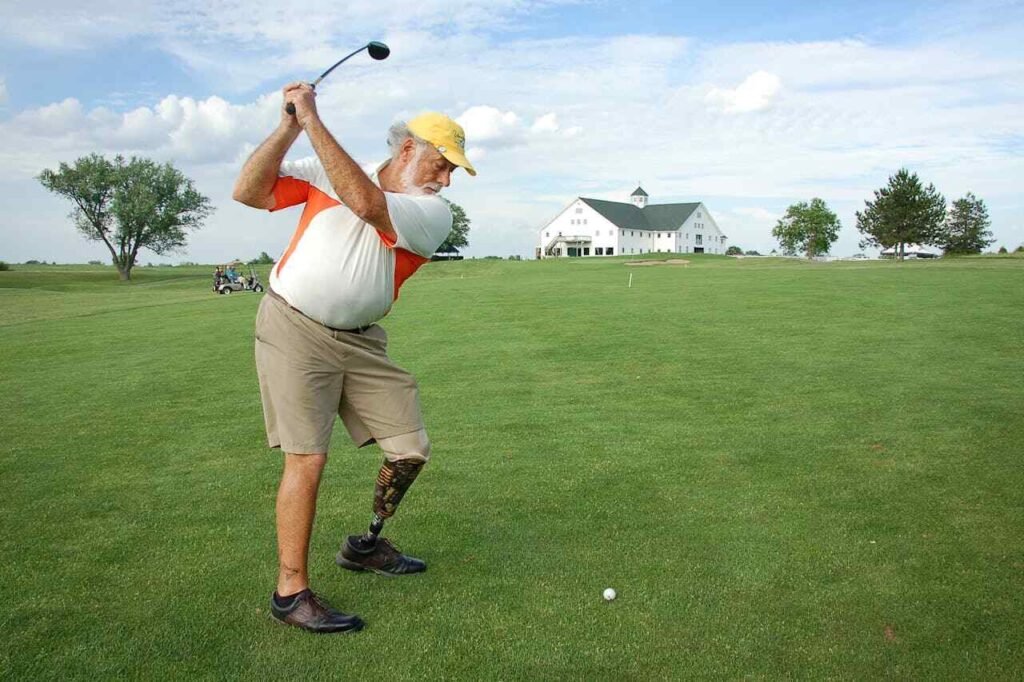
Strength is the secret to independence. But for seniors, the goal isn’t heavy lifting—it’s maintaining everyday power.
If you have access to light resistance bands, use them gently. Loop one around your hands and stretch it slightly outward while sitting. Hold for a second and relax.
Even without bands, simply pressing your palms together in front of your chest engages muscles. Repeat a few times with slow breathing.
This keeps your arms and chest strong for daily activities like opening doors or carrying light bags.
Supported Chair Squats
Squats are excellent for lower-body strength, but they can be modified for comfort.
Stand in front of a sturdy chair with your feet shoulder-width apart. Lower yourself halfway down as if sitting, then stand back up. Use the chair for balance if needed.
If you wear a lower-limb prosthesis, focus on even weight distribution. Move slowly and avoid jerky motions.
These mini-squats strengthen your thighs, hips, and knees—all vital for balance and safe walking.
Wall Push-Ups
Wall push-ups are one of the safest ways for seniors to build upper-body strength without pressure on joints.
Stand an arm’s length away from a wall. Place your hands flat on it, slightly wider than shoulder width. Bend your elbows to bring your body closer, then push back gently.
Keep your feet flat and your back straight.
This exercise improves chest and arm strength, making tasks like lifting groceries or reaching shelves easier. For prosthetic users, it helps maintain natural motion coordination between arms.
Seated Marching
Sit on a sturdy chair and lift one knee at a time as if marching in place. Keep your posture upright and core muscles engaged.
For seniors with lower-limb prosthetics, this movement strengthens the hip and thigh muscles that support balance.
It also keeps circulation active and adds a touch of cardio to your daily routine—without leaving your chair.
Toe and Heel Raises
Stand while holding onto a chair or countertop. Slowly rise onto your toes, pause for a moment, and lower back down. Then, lift your toes while keeping your heels grounded.
Repeat these motions gently.
This strengthens calf and ankle muscles, helping with walking stability. For lower-limb prosthetic users, it enhances coordination and improves balance during uneven surfaces.
Balance and Stability Training
Why Balance Is Key for Seniors
As we grow older, balance becomes one of the most important aspects of staying independent. Good balance helps prevent falls, improves posture, and makes walking with a prosthesis smoother and more confident.
For seniors using prosthetic limbs, balance isn’t just physical—it’s mental. It’s about trusting your body again, learning how your prosthesis moves with you, and finding a rhythm that feels safe and steady.
These next few exercises focus on simple, low-effort movements that improve coordination without tiring you out.
Standing Weight Shifts
Stand tall with your feet shoulder-width apart. If you use a lower-limb prosthesis, place one hand lightly on a table or chair for support.
Gently shift your weight from one leg to the other—slowly moving side to side. Feel your muscles engage as you balance on each leg for a second or two before shifting again.
This movement strengthens stabilizing muscles and improves confidence while standing or walking. Over time, your steps will feel more secure and natural.
Heel-to-Toe Walk
This is a simple balance exercise that improves your gait. Stand with your feet together and take a slow step forward, placing your heel directly in front of your opposite toe.
Move in a straight line if possible. Hold onto a wall for support if needed.
If you use a prosthetic leg, start with smaller steps and focus on posture—head up, shoulders relaxed, and back straight. This improves coordination and helps you develop smoother walking patterns.
Seated Balance Practice
Balance can be trained even while sitting. Sit upright on a firm chair with your feet flat on the floor. Slowly lift one foot off the ground for two seconds, then place it back.
Switch sides and repeat. This strengthens your core and stabilizes your hips—important muscles that support balance whether you’re sitting, standing, or reaching.
If you have a prosthetic leg, start by lifting the natural leg first, then the prosthetic side once you feel comfortable.
Side Leg Raises
Hold onto a chair or counter with one hand. Lift one leg sideways, keeping it straight and toes pointing forward. Hold briefly, then lower it down.
Alternate sides.
This gentle motion strengthens hip muscles and improves your ability to maintain balance while moving. It’s especially helpful for seniors using lower-limb prosthetics because it trains the body to stay centered.
Slow Arm Movements for Coordination
For those using upper-limb prosthetics, slow arm motions are perfect for maintaining balance coordination. Stand or sit comfortably and move your arms outward to shoulder height, then bring them down slowly.
If you have one prosthetic arm, move both sides together as smoothly as possible.
This helps your brain and muscles synchronize movements, which improves balance and control during everyday activities.
Relaxation and Flexibility Stretches
Shoulder and Arm Stretches
Tension in your shoulders can make daily activities harder, especially when using a prosthetic arm. To loosen them, raise your shoulders toward your ears, hold for two seconds, and then relax them down.
Next, stretch your arm across your chest and hold it gently with the other hand. Feel the stretch in your shoulder without forcing it. Switch sides and repeat.
These slow movements increase flexibility and reduce stiffness from long hours of sitting or using your prosthesis.
Back and Spine Relaxation
Sit tall on a chair and place your hands gently on your knees. Take a deep breath, and as you exhale, slowly lean forward, letting your back round slightly.
Hold for a few seconds, then slowly straighten back up.
This stretch eases lower-back tension and encourages gentle flexibility in your spine—something that becomes more important with age.
It also promotes better posture, helping prosthetic users maintain even weight distribution.
Gentle Side Twists
Sit comfortably with your feet flat. Place your right hand on the back of the chair and gently twist your torso to the right. Hold for two seconds, then return to center.
Repeat on the other side.
This mild twisting motion strengthens your waist and keeps your midsection flexible. For upper-limb prosthetic users, it also improves torso coordination during reaching or lifting.
Neck and Jaw Release
Tension often builds in the neck and jaw, especially for seniors. Slowly tilt your head toward one shoulder, hold briefly, then switch sides.
Afterward, open and close your mouth gently as if yawning—this releases jaw tension and improves circulation around your neck.
A relaxed upper body supports smoother prosthetic use and eases general fatigue.
Seated Forward Reach
Sit on a sturdy chair with your feet apart. Slowly reach forward as far as is comfortable, trying to touch your knees or toes.
Keep your back straight, and return upright slowly.
This motion stretches your spine and hamstrings, improving flexibility for walking and bending movements.
If you have a prosthetic arm, reach gently using your natural side or move both arms together without strain.
Breathing and Mindful Movement
The Importance of Deep Breathing
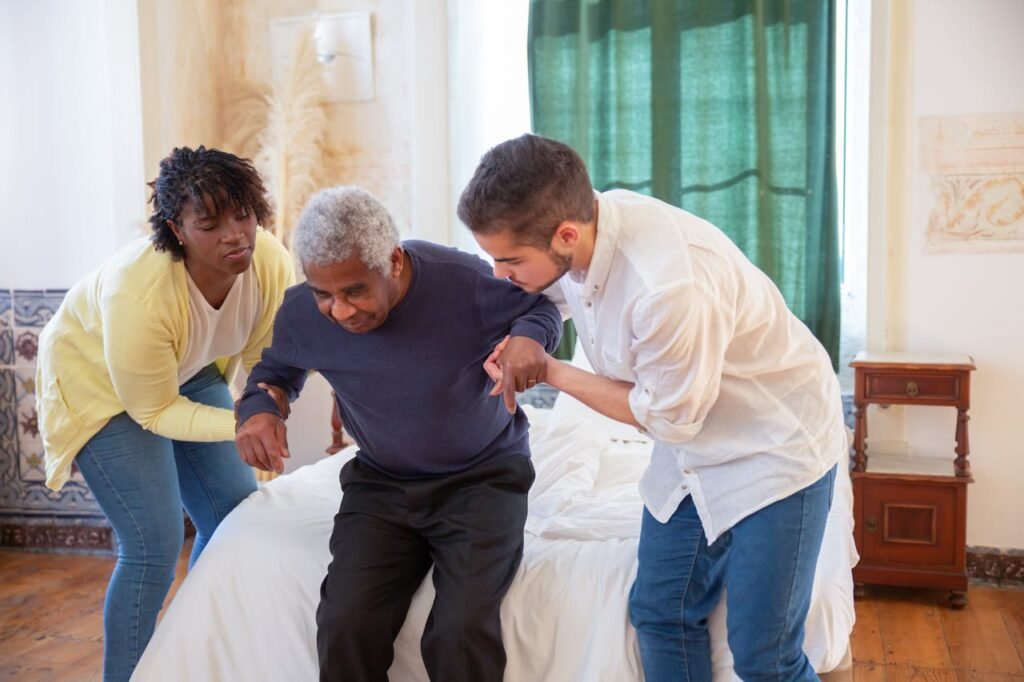
Breathing exercises keep your body oxygenated, calm your nerves, and improve endurance. For seniors, they also help manage stress and promote better posture.
When done with prosthetic-friendly exercises, mindful breathing creates a full-body rhythm—one where your movements follow your breath naturally.
This coordination makes daily tasks easier and keeps you feeling centered and relaxed.
Simple Deep Breathing Routine
Sit comfortably with your back straight. Place one hand on your chest and the other on your abdomen.
Breathe in slowly through your nose, feeling your belly rise. Hold the breath for two seconds, then exhale gently through your mouth.
Repeat this five times.
As you breathe, keep your shoulders relaxed and your jaw soft. This not only calms the mind but also improves oxygen flow, helping your muscles work efficiently during movement.
Counting Breaths for Rhythm
To strengthen focus and calm your mind, try breath counting. Inhale to the count of four, hold for two, and exhale for four.
This steady rhythm helps reduce anxiety, lowers blood pressure, and keeps you present in the moment.
You can do this anytime—before sleep, during your walk, or while sitting quietly. It’s a simple habit with powerful effects.
Integrating Breathing with Movement
Combine your breathing with slow stretches or arm lifts. Inhale as you lift your arm or stand tall, and exhale as you return to rest.
This coordination teaches your body to move smoothly and reduces tension in the shoulders and back.
For prosthetic users, synchronizing breath and motion improves control and balance, especially during repetitive activities like reaching or walking.
Ending the Session with Stillness
After completing your exercises, take a minute to sit quietly. Let your arms rest, close your eyes if comfortable, and take three deep breaths.
Feel your heartbeat slow down and your muscles relax.
This small moment of calm signals to your body that your session is complete and leaves you with a sense of peace and clarity.
A 10-Minute Daily Routine for Seniors
The Morning Flow
Start your day with gentle movements that wake up your joints. Begin with shoulder rolls and deep breathing for one minute.
Next, practice seated leg extensions or ankle circles for another two minutes to improve blood flow.
Add slow side bends and torso twists for flexibility. Spend two more minutes on standing weight shifts for balance.
Finish the session with gentle breathing exercises for the final three minutes.
In just ten minutes, you’ve stretched, strengthened, and refreshed your entire body.
The Evening Routine
If you prefer evenings, focus on relaxation. Start with seated marches or toe raises to ease stiffness from the day.
Then, add neck rolls and shoulder stretches to release tension.
Follow with seated forward reaches and deep, slow breathing for calmness before sleep.
A short evening routine not only supports physical comfort but also improves sleep quality and helps your body recover overnight.
Adjusting for Comfort
Every senior has a unique rhythm and energy level. If a movement feels too much, reduce the range or sit down while doing it.
The goal isn’t to perform perfectly—it’s to keep moving gently, safely, and regularly. Even a few minutes of consistent effort bring long-term benefits.
If you use a prosthesis, check its fit before exercising. Adjust straps, ensure your liner is dry, and stop if you feel any discomfort.
Comfort leads to confidence, and confidence keeps you consistent.
Motivation and Consistency
Building the Habit Slowly
When starting any new routine, especially one involving physical movement, the hardest part is not the exercise—it’s the consistency. Many seniors give up too early because they expect quick results.
The secret is to start small and build slowly. Commit to ten minutes each day, not an hour once a week. Ten minutes is short enough to fit into your morning tea time or before your evening walk.
If you miss a day, don’t feel guilty—just start again tomorrow. What matters is that you keep returning to it. Over time, your body learns the rhythm, and what once felt like effort becomes a natural part of your day.
Finding Your Best Time of Day
Some seniors prefer mornings when the body feels rested and the mind is calm. Others find evenings better for stretching and unwinding. There’s no perfect time—only the one that fits your routine best.
Try different times for a week and see when you feel most comfortable. Once you find it, stick to it. Consistency at a chosen time helps the body form a memory for movement.
Staying Motivated
Motivation fades when goals feel distant. Instead of focusing on results, focus on feelings. Notice how your body relaxes after stretching or how your steps feel steadier after balance training.
These small improvements are success stories worth celebrating.
You can also keep a simple notebook where you jot down your daily routine—how long you exercised, what felt easy, and what needs work. Seeing your progress written down can be incredibly rewarding.
Creating a Peaceful Exercise Space
Choose a quiet, comfortable spot in your home for your exercises. A corner near a window, with a sturdy chair and enough room to stretch, is perfect.
Keep your prosthetic care items—like cleaning cloths or liners—nearby so everything feels organized.
A peaceful environment helps you stay calm and focused, turning your ten-minute routine into a moment of self-care rather than a task.
Celebrating Progress
It’s easy to overlook how far you’ve come when changes are slow. Every extra second of balance, every smoother movement, and every calmer breath counts as progress.
Reward yourself for sticking with it. It could be enjoying your favorite snack afterward or listening to soothing music while you stretch.
Progress is not measured by speed—it’s measured by persistence.
Adapting Exercises to Different Prosthetics
Upper-Limb Prosthetics
If you use an upper-limb prosthesis, focus on exercises that encourage smooth coordination and flexibility. Gentle arm lifts, shoulder rolls, and light resistance training are perfect.
Start each session by checking the fit of your socket and adjusting straps if needed. During movement, pay attention to how your prosthesis aligns with your body.
Avoid fast or jerky motions that could strain the joint or loosen your device. Instead, move slowly and steadily. This helps build both muscle memory and control.
Over time, you’ll find your prosthesis responding more naturally to your body’s rhythm, whether you’re cooking, typing, or folding laundry.
Lower-Limb Prosthetics
For those using a prosthetic leg, low-effort standing exercises like weight shifts, toe raises, or supported squats are excellent. These help strengthen surrounding muscles that support balance.
Always stand near a sturdy surface for stability. Start with short sessions—five minutes in the morning and five at night—and increase gradually.
Pay attention to pressure points. If you feel rubbing or discomfort, stop immediately and check your liner or socket fit. Smooth alignment keeps you safe and comfortable during movement.
Walking slowly indoors can also be part of your exercise. Each step strengthens coordination between your natural and prosthetic limbs.
Combination Movements
If you use both upper and lower prosthetics, combine seated and standing movements. Seated stretches for arms and torso, followed by short standing exercises, create a balanced routine.
The key is to listen to your body. Some days will feel stronger than others, and that’s perfectly fine. The goal is steady improvement, not perfection.
For Wheelchair Users
Many seniors use wheelchairs with or without prosthetics. Exercises can still be highly effective while seated.
Try gentle arm raises, torso twists, neck stretches, and deep breathing routines. You can also perform seated marches by lifting one knee at a time.
These movements keep blood circulation active and strengthen your upper body for better control. Ten minutes a day can make sitting more comfortable and your movements more fluid.
Recovery and Care After Exercise
Cooling Down
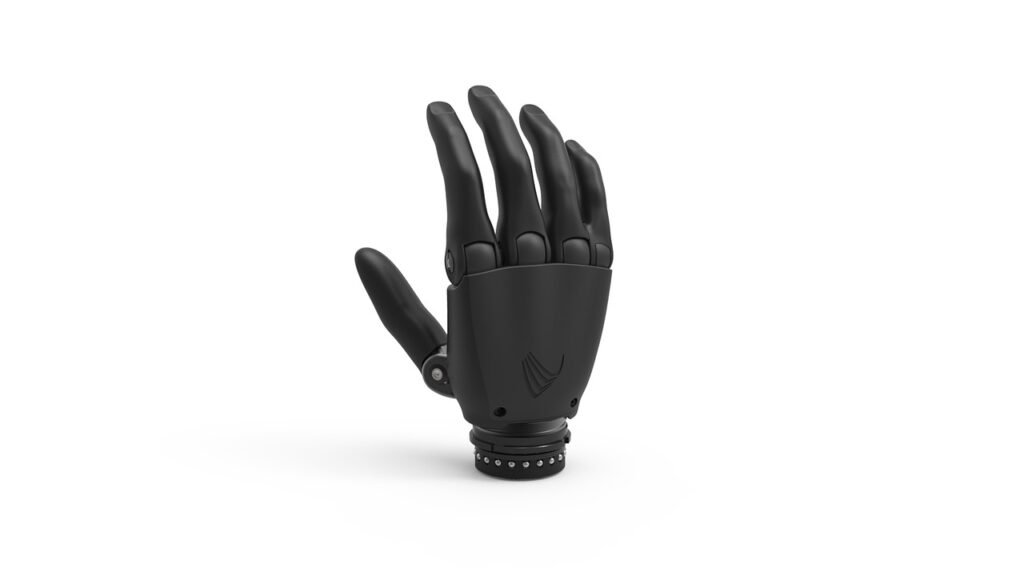
Cooling down is just as important as warming up. After your exercise, spend a few minutes stretching gently or breathing deeply.
This helps your heart rate slow down gradually and prevents stiffness the next day. Sit comfortably, move your shoulders in slow circles, and take calm breaths.
For prosthetic users, it’s also the perfect time to check for any irritation or tightness around the socket. Early care prevents skin issues and ensures long-term comfort.
Skin and Socket Care
After exercising, remove your prosthesis and clean the socket area gently with a damp cloth. Dry your skin completely before reattaching the liner or storing your prosthesis.
If you notice redness, use a soft moisturizer but avoid anything greasy before wearing your prosthesis again. For women and seniors with sensitive skin, fragrance-free products are safest.
This quick post-exercise care becomes second nature once you make it part of your routine.
Hydration and Nutrition
Drink water before and after exercising. Staying hydrated helps your muscles recover and keeps your skin supple.
Eating light, nutritious meals rich in fruits, vegetables, and proteins supports your body’s healing and strength.
Healthy food complements your exercise—your body can only move well if it’s fueled well.
Rest and Listening to Your Body
Rest is not laziness—it’s part of recovery. If you feel tired after a few days of consistent exercise, take a day off.
Your muscles need time to rebuild strength. Seniors, especially, benefit from gentle pacing rather than constant effort.
If you ever feel sharp pain, dizziness, or swelling, stop immediately and consult your prosthetist or doctor. Safety should always come first.
Real Stories of Strength and Simplicity
Ramesh’s Story – Rediscovering Movement
Ramesh, a 72-year-old retired engineer, thought his walking days were behind him after his amputation. He received a Grippy Mech Hand and a lower-limb prosthesis from RoboBionics but hesitated to move much.
With encouragement from his prosthetist, he began a 10-minute daily routine—simple stretches and weight shifts. Within a few months, his energy returned.
He now walks short distances each morning and says, “The exercises gave me confidence before they gave me strength.”
His story shows that movement starts in the mind. Once you believe you can, your body follows.
Leela’s Story – Finding Balance Again
Leela, 68, lost her lower arm in an accident. She found daily tasks difficult and stopped doing small chores out of fear of dropping things.
When she started practicing slow arm and shoulder movements with her Grippy Bionic Hand, her confidence returned.
“I learned to trust my hand again,” she says. “Ten minutes every morning changed my whole day.”
Now she paints, cooks, and gardens without hesitation—proof that small, steady effort brings big joy.
Abdul’s Story – Staying Independent
Abdul, 74, uses a below-knee prosthesis. He had been avoiding stairs for years because of fear of falling.
His therapist introduced him to balance exercises—seated leg lifts and heel raises, done daily for ten minutes.
Within two months, his confidence improved so much that he began walking to the neighborhood shop again. “I feel younger,” he laughs.
It’s never too late to regain independence when the right steps are taken slowly.
Savitri’s Story – A Routine of Self-Care
Savitri, a 70-year-old grandmother from Mumbai, uses an upper-limb prosthetic hand. She treats her 10-minute exercise session as a sacred ritual.
She lights incense, plays soft music, and moves gently—stretching, breathing, and smiling through it all. “It’s my quiet time,” she says. “It reminds me that I’m still capable.”
Her approach shows that exercise doesn’t have to be about fitness—it can be about peace, pride, and gratitude for what your body can still do.
Moving Forward
Aging changes the body, but it doesn’t have to limit movement. For seniors using prosthetics, exercise isn’t about pushing harder—it’s about staying active, balanced, and joyful.
Just ten minutes a day can make a lifetime of difference. It keeps your joints flexible, your muscles steady, and your heart happy.
Every breath, every stretch, and every careful motion adds to your independence. You’re not just maintaining your prosthesis—you’re nurturing your freedom.
At RoboBionics, we design prosthetic solutions like the Grippy Bionic Hand and Mech series that work with your lifestyle, not against it. Our goal is to make every movement easier, safer, and more natural for people of all ages—especially seniors who deserve comfort and confidence.
If you or a loved one want to learn gentle, prosthetic-friendly exercises or try advanced, lightweight designs built for everyday ease, schedule a free demo at www.robobionics.in/bookdemo.
Because staying active with prosthetics isn’t about effort—it’s about embracing movement, one calm and steady step at a time.



